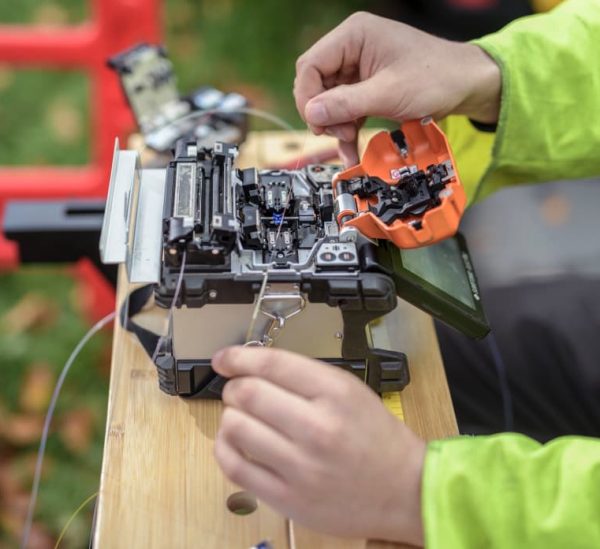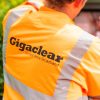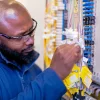Openreach Tweak FTTP on Demand Pricing and Adds New Speeds

Openreach (BT) has announced the expected addition of several new speeds tiers, including the more consumer orientated 550Mbps (75Mbps upload) and 1Gbps (115Mbps upload) options, to their business focused FTTP on Demand (FTTPoD / FoD) UK broadband ISP product. On top of that they’ve also tweaked some of its prices.
Just to be clear, since some people still get this confused with a native FTTP deployment (i.e. where Openreach builds “full fibre” to your street via their own investment). FoD is designed to be requested (on demand) by those in slower hybrid fibre FTTC capable areas, where Openreach’s pure fibre optic cables usually only go as far as your local street cabinet (DSLAM) and not onwards toward local premises.
Essentially FoD enables you to get an ultrafast Fibre-to-the-Premises (FTTP) line built right to your property, even if FTTP wasn’t previously planned or natively deployed to your area. The big catch with this is that the end-user ends up having to stomach the often huge civil engineering costs for the roll-out, which in some areas may cost thousands or even tens of thousands (i.e. it’s more intended as a premium product for smaller businesses).
Advertisement
Openreach has now announced a series of changes to FoD that will be introduced from 1st September 2020. Firstly, the one-off FoD build charge exemption per PON (Passive Optical Network) is being cut from £700 +vat to £615. Secondly, connection charges on all FoD tiers (excluding 500/165 and 1000/220) will be increased from £92 to £98.48.
On top of that the operator has also introduced all of the recently launched consumer FTTP speed tiers into the FoD line-up, which has had the particularly notable impact of reducing the annual rental on their 330Mbps tier (both 30Mbps and 50Mbps upload) from £456 to £291.36 (£24.28 per month). Obviously none of this includes the huge build costs (Excess Construction Charges), which will vary depending upon your location.
FTTP on Demand Connection and Rental Charges (September 2020)
| Feature | Operative Date | Connection +vat | Annual Rental +vat |
|---|---|---|---|
| 115Mbps/20Mbps | 01/09/2020 | 98.48 | 207.36 |
| 160Mbps/30Mbps | 01/09/2020 | 98.48 | 253.68 |
| 220Mbps/30Mbps | 01/09/2020 | 98.48 | 255.36 |
| 330Mbps/30Mbps | 01/09/2020 | 98.48 | 291.36 |
| 330Mbps/50Mbps | 01/09/2020 | 98.48 | 291.36 |
| 550Mbps/75Mbps | 01/09/2020 | 98.48 | 327.36 |
| 1000Mbps/115Mbps | 01/09/2020 | 98.48 | 375.36 |
| 500Mbps/165Mbps | 01/02/2018 | 500.00 | 660.00 |
| 1000Mbps/220Mbps | 01/02/2018 | 500.00 | 960.00 |
As usual the above prices reflect wholesale charges and do not include any of the additional costs that ISPs will need to add on top (e.g. profit margin, features, capacity / network, 20% VAT etc.). Sadly very few ISPs offer FoD (e.g. Cerberus Networks, Syscomm, Amvia, Specrum Internet [South Wales] and FluidOne), not least because it sits so close to leased line / Ethernet pricing and yet lacks some of the advantages of those products.
Advertisement
We believe that FoD from some ISPs is also eligible for funding via the Government’s Rural Gigabit Voucher Scheme (i.e. multiple orders may be submitted as part of a group order and voucher funding pooled), although this does clash a bit with Openreach’s own co-funded Community Fibre Partnerships (CFP) programme that may work better for some communities.
Mark is a professional technology writer, IT consultant and computer engineer from Dorset (England), he also founded ISPreview in 1999 and enjoys analysing the latest telecoms and broadband developments. Find me on X (Twitter), Mastodon, Facebook, BlueSky, Threads.net and Linkedin.
« Lite Access Joins Cityfibre’s 1Gbps FTTH Rollout in Cambridge






















































But haven’t the higher speed tiers on FoD (>330/30) been available on Openreach for a while? Its just that BT Wholesale haven’t sold anything anything above 330/30 on FoD…has that now changed?
The new tiers above are (same as those introduced via Openreach in March on native FTTP):
• 115/20
• 220/30
• 550/75
• 1000/115
As for BT Wholesale (not all ISPs take supply from them), but from what I can tell they have been offering FoD via the previous 330Mbps, 500Mbps and 1Gbps tiers since 2018.
Obviously it’s too soon to know when BTW will adapt to the new FoD tiers, although those tiers become irrelevant after your first contract is up and you can switch to a residential FTTP provider.
Apparently, Openreach previously offered 160/30, 330/30 and 330/50 FTTPoD tiers.
However when I ordered (in 2018), Cerberus said they could only provide 330/30, because this was the only speed that BTW/BTE would provide – despite the fact that 330/50 was the same price as 330/30 from Openreach!
After installation, it was not possible to regrade to 330/50 during the first year.
It was possible to regrade to 500/165 or 1000/220 – but that would attract a £1000+VAT charge instead of the normal £500+VAT setup for those tiers. Basically, you have to sit tight for a year before switching to a different FTTP product.
Why’s the down the same as the up, it should be like 100/100, 200/200, 300/300 etc etc
That’s terrible pricing for 330 down with 30 up…
I still don’t understand the pricing of it to be honest like I’m paying 200/200 here in hk for 30 quid with the installation waived and I understand FOD is an independent line like how much would that be for me in the UK my nearest exchange being crowthorne
This is exactly what i don’t understand. Why is it not same speed up and down? The only explanation is that the backbone is not ready to take on synchronise speed, I.E 100/100 or 330 / 330. I also don’t understand why 330 and not 320 or 370? All a bit confusing.
‘The only explanation is that the backbone is not ready to take on synchronise speed’
Nothing at all to do with the ‘backbone’. The ‘backbone’ is synchronous.
The 330 is to allow for sale of 300 Mbit products – the extra 10% ensures the median speed is above 300. Ditto 550 but for 500 Mbit tiers, etc.
Ray – do you not think that perhaps being in a place with one of the highest population densities in the world may have something to do with what’s available to you? Crowthorne’s 7,000-ish population is the population of a single square kilometre, out of the 1,050 square kilometres, in Hong Kong.
If Crowthorne were all apartment complexes it’d have gigabit throughout.
FoD is not an ‘independent line’, still shared, no guarantees.
Talking of guarantees the restrictions on advertising are far stricter in the UK. In HK companies can sell you 10G based on fibre networks that deliver 9.1G total shared between however many people.
Comparing the UK to Hong Kong isn’t fair. The only reasonable comparison is between the various HK providers and someone like Hyperoptic.
It’s not the same speed up and down because fundamentally GPON which Openreach use is 2:1 up and down. However that does mean that they should be offering speeds like 80/40, 160/80, 320/160 etc. The only plausible reason they don’t is to protect their leased line business. It should be made a condition of any further public money provided to Openreach for fibre (aka Boris £5 billion) that download/upload speeds *must* match the underlying technology.
They use GPON for their backbone? Wow.
On the other matter usage patterns of upstream and downstream are different as are how efficient they are.
A blunt rule like that would be unwise.
The upstreams are so relatively low to guarantee performance. Higher upstream broadband needs are being addressed via XGSPON.
Is it still the case that FoD is only available if FTTC is available (even though they are not interdependent)? Is that ever likely to change?
I think these days the mention of FTTC is just an easier way of saying that you’re likely to be close enough to one of their fibre aggregation nodes in order to get FoD. If you’re in an ADSL-only area then you’re probably a lot further from an agg node.
I understood that it was a way of limiting demand, as well as weeding out the expensive cases. I used to have an EO ADSL line (I now use 4G) but BT business did try to get me a FoD quote but were told that it was an 11 mile build so it wasn’t worth quoting (even though the local village has FTTC), so I guess the agg node that the village cabinets use is 10 miles away.
However, there must be people on EO lines that are much closer to an agg node, but they can’t even get a quote.
You’d be right, AnotherTim. We recently (over a year ago) placed a cluster of FTTPoD orders linked together to maximise the Gigabit Voucher value. One of the properties was not very far from the others but was deemed by OR not to be able to get VDSL therefore couldn’t order. However the neighbouring property (served from the same copper DP and only 100m away) could.
So the order was placed in that property’s name and once the connectorised fibre DP was installed we switched the property.
Madness.
Cerberus have certainly tweaked their pricing too.
In 2018 my FTTPoD install quote was £8000 + VAT
Last month, an updated FTTPoD quote for 2020 was £16,000 + VAT to the same property.
I can play pull the random number out of my backside too.
You usually get two quotes, a desktop quote and then if you decide to proceed there’s a final engineering survey quote. The desktop quote can be highly inaccurate. I assume those were both desktop quotes if you didn’t proceed to order?
Hi Mark
Yes I was unwilling to spend £250 on the full survey when the quotes were so high. I really could have had talk talk come in and do a full leased line for me for cheaper install and cheaper monthly just not as fast. And Virgin media were willing to charge me a whopping total of £0 for installing a fibre optic DIA link but they insist on 3 year contracts.
When it was £8k I was seriously considering it. But then I came to my senses and ordered bonded DSL as a backup for virgin media.
FTTPoD is a wate of time, waste of money. FTTP are much cheaper and best future but very poor upload.
You do know that FTTPoD is FTTP, but the oD part is that you pay for Openreach to install FTTP to your area.
Hey ADSLMax. How’s it going?
I have to agree with other posters here, it’s a poor product because of the low upload speeds. Also, FTTPoD also has an extremely long order fulfillment and install times, often many months.
In many cases there a better alternatives. Another Openreach farce.
If the install costs are not too astronomical FTTP on Demand has its place, the fact many people have taken up the offer proves this, and if you are business or run a business from home there was a voucher scheme to give you £2500 off. Just because person A has a very high build cost and thinks it is pointless, doesn’t mean person B will.
Of course native FTTP is better, it is the same product and installed for free! However FTTP may be many years away for some people.
Build times range anywhere from 6 to 18 months with most falling somewhere in between.
A leased line will work out a lot more expensive in most cases because you are tied into the same company for 3 years, or shorter contracts attract a bigger up front cost to cover the build, and the monthly costs are much higher.
Of course times change and FTTP on Demand becomes ever more a gamble where price is concerned and that is the main consideration (rather than SLAs which are miles better on a leased line, usually), simply because it might not be long before native FTTP arrives at the same location, this means a 3 year leased line may be cheaper and installed quicker under the “gamble” that native FTTP arrives by the time the leased line contract is up.
As for speeds, it has been usual that the first 12 months are 300/30, then after that the person is free to move to any supplier and chose any other speed profile and it just becomes normal FTTP.
So you might have FTTP with a build cost of £8000 + 12 months contract at £1,440 then each year ~£600 (for similar speed), over 3 years this gives you a total cost of £10,640. A leased line over 3 years typically £2K up front cost, then £280 a month for 3 years = £12,080. So for many people FTTP on Demand is cheaper over a 3 year period, and the cost savings are then made each and every year.
Phil, I agree. But as you said, the build times are extremely long here. Quite often using a long-distance wireless service, if available, makes more sense to get a connection set up quickly, such a 4G. Or even bonding multiple VDSL lines.
In general this just shows how hopelessly behind this country truly is.
@GNewton, yes typically there are quicker options if speed is so poor the priority is to get anything ASAP, although not everyone may have many other options depending on their location, so FTTP on Demand may be the only practical solution for some if they can stomach the costs and build times.
Despite other options, you can’t beat FTTP for reliability, performance and future proofing, and it is the only option that will allow you to shift around and pick your broadband supplier.
Yes the time to taken to get it installed means it is very much of a gamble these days, i.e. paying £10K, waiting 12 months to get it, then 12 months later Openreach install it for free in your town or city as part of their upgrade program, meaning you’ve paid a £10k premium to get fibre 12 months quicker than you would have done for free.
If there are better alternatives in many cases I don’t see the problem. Last I checked that’s how things are supposed to work in a market economy. If you think there are better alternatives you just spend your money elsewhere, it’s that simple.
If only they could stop one of there own from riding from exchange and private number of his work phone
ringing not riding
@CarlT: You are missing the point here, in your eagerness to defend the Openreach farce.
The bottom line is, this country is more than a decade behind of where it should be. Having to wait for a hopelessly overpriced product for 6 to 12 months is simply not acceptable.
Other suppliers have been able to install for 30 years. Why do you not blame Virgin Media?
Not really. You’re missing your point in your eagerness to pick faults in everything.
There are, you said, alternatives. In which case all is well.
If Openreach are well behind, and they were indeed late to the party, the market should be punishing them.
I reckon most people remain disinterested for now and it’ll only become clear how late OR actually were over the next years. Demand for ultrafast is still not massive.
New open reach pricing for the 1st September 2020 is available.
https://www.openreach.co.uk/orpg/home/products/pricing/loadProductPriceDetails.do?data=0WyIM7tTGGgucFf0dXUIWK4XSAplAmgrRZNg5Pk%2B5%2F%2BkRgB7BL4KNYn%2FlKx2YB4Qe6YShZ82RgLOGLsH2e9%2Bmw%3D%3D